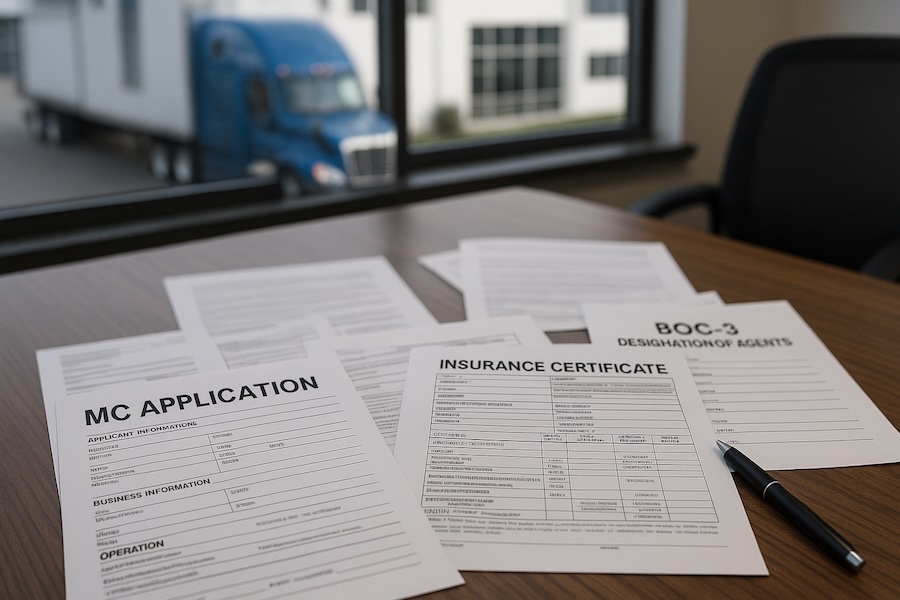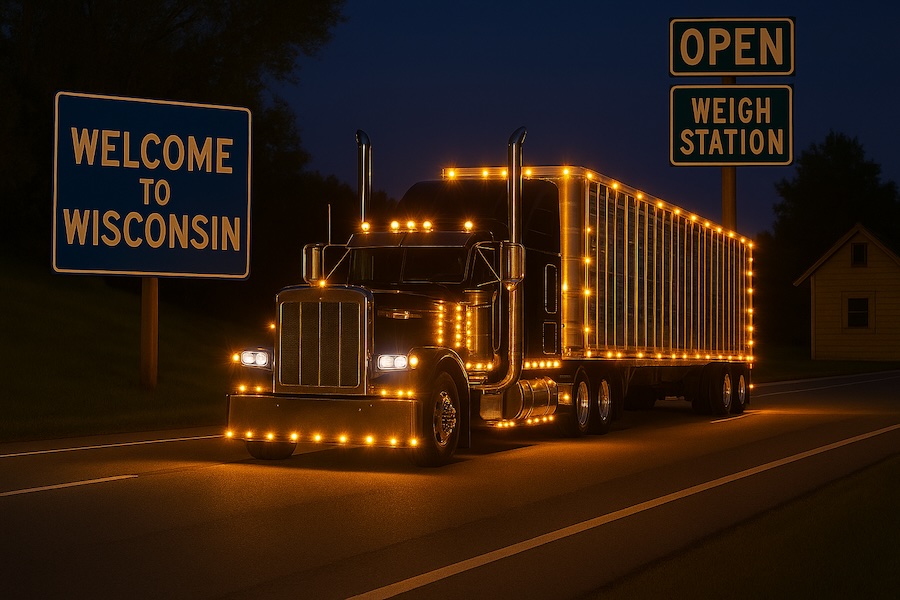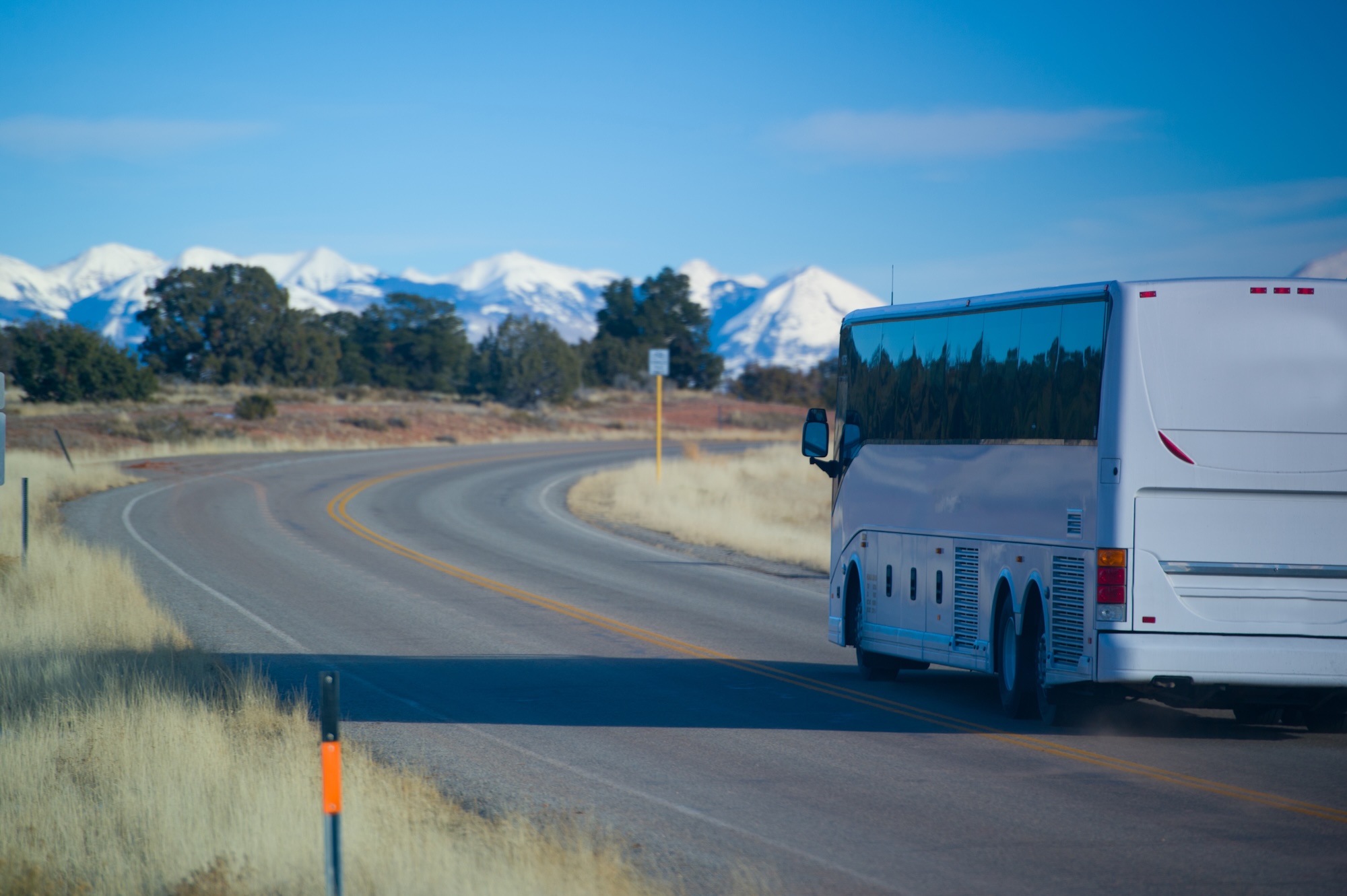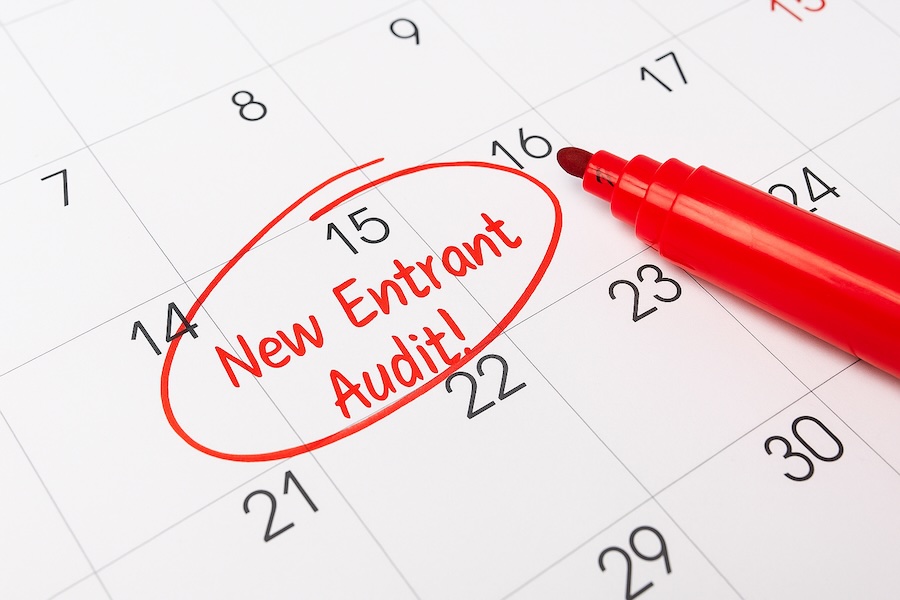MC number and operating authority made simple
Understanding MC number requirements is crucial for commercial carriers. Which authority to choose. How to apply. What to expect with insurance, BOC‑3, UCR, MCS‑150, IRP/IFTA, and audits. Passenger and freight both covered.
Start your MC number application process with our guided filing service.

Do you need an MC number
- For hire passenger carriers in interstate commerce
- For hire carriers moving federally regulated commodities interstate
- Brokers and freight forwarders need their own authority
Who may not need authority
- Private carriers hauling their own goods
- For hire carriers hauling only exempt commodities
- Some operations inside a federal commercial zone
No MC number on the truck
- Display legal name or DBA
- Display USDOT number on both sides
- MC number display is not required
What is an MC number and who needs operating authority
An MC number is FMCSA's docket identifier for operating authority. If you carry passengers for hire across state lines, or carry federally regulated commodities for hire in interstate commerce, you need operating authority. However, private carriers may not, and some operations inside a federal commercial zone or that haul exempt commodities may not. We confirm your status and coach next steps.
Learn more: FMCSA Registration & Operating Authority and DOT FMCSA Overview.

MC number types: Operating authority classifications
Pick the authority that matches your operation. Some businesses need more than one.
- Motor Carrier of Property (except household goods)
- Motor Carrier of Household Goods (moving companies)
- Motor Carrier of Passengers
- Broker of Property and Broker of Household Goods
- Freight Forwarder (property or household goods)
- U.S. based enterprise carrier of international cargo or household goods
- Mexico domiciled options use MX or OP-2 programs
Authority type sets your insurance filings and financial responsibility requirements under 49 CFR Part 387. Therefore, understanding which authority applies to your operation is crucial for compliance.
Common forms
- BMC-91/91X: public liability
- BMC-34: cargo for household goods carriers
- BMC-84/85: broker and freight forwarder bond or trust
- BOC-3: process agent designation
Your insurer or bond/trust provider files these with FMCSA.
Apply for your MC number
We handle the entire MC number application process, from URS filing to insurance coordination.
MC number requirements for passenger carriers
- For hire interstate passenger operations require operating authority under 49 CFR 365
- Insurance minimums depend on seating capacity: 1.5M for 15 or fewer including the driver; 5M for 16 or more per 49 CFR 387.33
- Prearranged air, rail, or ship plus shuttle can be interstate even inside one state. Some short airport shuttles within a 25 mile zone are exempt from authority
We map your vehicles, seating, routes, and bookings to confirm your status and coverage level.

Interstate, intrastate, and multimodal
Interstate status can apply even if your vehicle stays inside one state. For freight, the test is the shipper's fixed and persistent intent as defined by 49 CFR 390.3. Therefore, if a leg is part of a continuous interstate movement, it is interstate. Similarly, for passengers, a prearranged trip that pairs air or rail with a shuttle can make the shuttle interstate. In contrast, walk up curb rides are different.
- Warehouse to store inside the same state, but the goods came from out of state. Interstate.
- Passenger books flight plus hotel shuttle in advance. Interstate.
- Passenger lands and hires a local ride on arrival with no prearrangement. Usually not interstate.
How to apply for an MC number and get granted
- Decide structure. Your entity, name, and business address must be consistent across all filings.
- Start in URS. New applicants use FMCSA's Unified Registration System for USDOT and operating authority.
- Pay fees. The cost is $300 per authority, with separate fees for each type.
- File insurance and BOC-3. Your insurer files BMC-91/91X and others. Process agent files BOC-3. You typically have up to 90 days after publication to complete filings.
- Publication and protest. FMCSA publishes your application with a short protest period.
- Processing time. URS applications commonly take about 20 to 25 business days, longer if flagged for vetting.
We prepare your evidence pack and keep names, addresses, and insurance data aligned to avoid delays.
Display USDOT, not MC
Display the legal name or DBA and your USDOT number on both sides of each self propelled CMV. Display of MC numbers on vehicles is not required.
We can file it for you
URS intake, insurance coordination, BOC-3, and a clean handoff to your insurer and process agent.
After you get authority: audits, filings, taxes
- New Entrant Safety Audit. Property carriers usually within 12 months per FMCSA new entrant requirements. Passenger carriers can be sooner
- MCS-150 biennial update. Update your USDOT data every 24 months or when changes occur via FMCSA registration updates
- UCR annual registration. Required for most interstate entities through Unified Carrier Registration
- IFTA fuel tax and IRP apportioned plates. If you run qualified vehicles across states, register with IFTA Inc. and your state's IRP office
- IRS Form 2290 HVUT. For vehicles 55,000 pounds or more, file with IRS Heavy Vehicle Use Tax
- Ongoing insurance on file. Keep required levels active or risk revocation

Complete MC number application process with expert guidance - from URS filing through insurance coordination.
LBC FAQ Pro
Do MC numbers need to be painted or displayed on the vehicle
No. Federal rules require your legal name or DBA and the USDOT number on both sides of the vehicle. MC number display is not required.
Who actually needs an MC number
For hire passenger carriers in interstate commerce. For hire carriers moving federally regulated commodities in interstate commerce. Brokers and freight forwarders need their own authority. Private carriers and some exempt commodity carriers may not.
What types of operating authority exist
Motor Carrier of Property, Motor Carrier of Household Goods, Motor Carrier of Passengers, Broker of Property, Broker of Household Goods, and Freight Forwarder. Special cases include U.S. based enterprise carriers of international cargo or household goods, and Mexico domiciled programs.
How long does it take to get authority
URS applications commonly take about 20 to 25 business days. Your application is published and can be protested for a short window. You also have a 90 day clock for insurance and BOC-3 filings. Vetting can add time.
Does a multimodal trip inside one state count as interstate
Often yes when the whole trip is prearranged, like air plus shuttle. Walk up curb rides are different. Freight legs tied to out of state origin or destination are also often interstate.
What obligations start once I have authority
New Entrant Safety Audit. Biennial MCS-150 updates. Annual UCR. If you qualify, IRP and IFTA. HVUT 2290 for heavy vehicles. Maintain insurance on file. Stay ready for compliance reviews.
Talk to a compliance pro
Bring your routes and equipment list. We will confirm what authority you need and set a simple plan to file and stay current.
More reading: FMCSA, Commercial Vehicle Safety Alliance, American Transportation Research Institute, U.S. Department of Transportation.